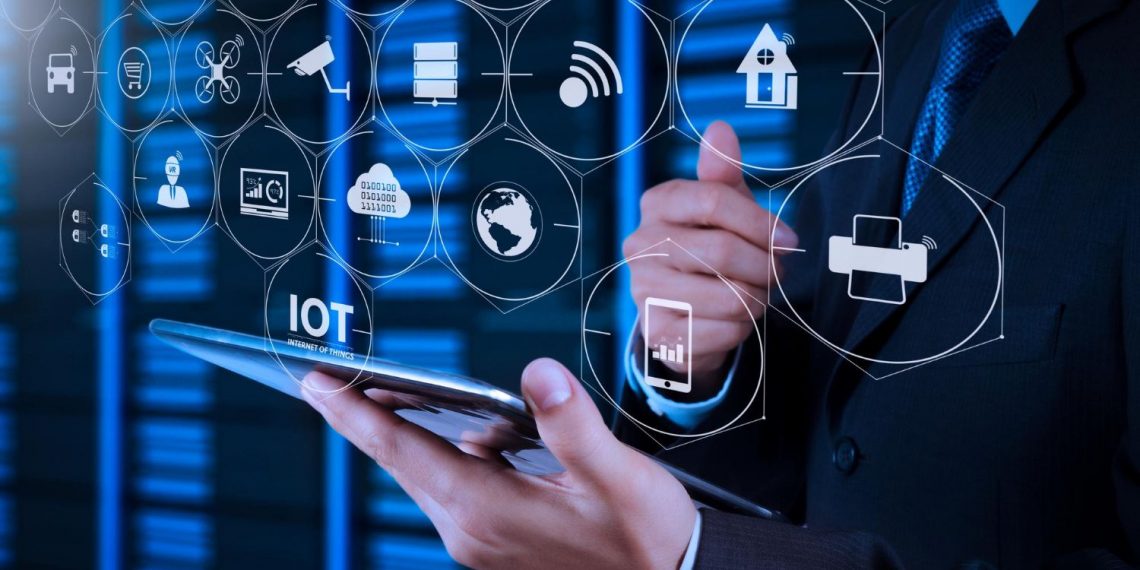Just when we thought smartphones were the most groundbreaking technology, fully automated electric trucks emerged on our roads. The one thing that stands out in all these smart inventions is the Internet of Things (IoT). However, as the amount of data generated increases, we need more efficient and effective ways to process, store and analyse it. This is where Edge Computing comes in.
This technology enables businesses to make real-time decisions, enhance operations, and reduce downtime, increasing efficiency and productivity. Here, we’ll discuss the importance of Edge Computing in IoT and delve into its advantages over Cloud computing.
Understanding the Internet of Things (IoT)
The Internet of Things, or IoT, is a network of connected devices exchanging data, from smartphones, wearables, and home appliances, to cars, production equipment, and infrastructure.
These devices work to make our lives easier and more comfortable. For instance, smart homes use IoT devices to automate tasks like adjusting temperature and lighting, turning on appliances, and monitoring security through wireless CCTV.
In healthcare, doctors use IoT devices to monitor patients’ vital signs and alert them in case of changes that require immediate medical attention.
However, IoT also has challenges like security. As we connect more devices, risks such as cyberattacks grow, and the complexity of managing and maintaining large-scale IoT networks gets more costly and time-consuming for many societies.
What Is Edge Computing?
Edge computing is a distributed computing paradigm that brings data processing closer to the data source generated by IoT devices. In other words, it’s a way to process and analyse data closer to where it’s generated rather than sending it to a centralised location like cloud computing.
For example, imagine a city that uses IoT devices to monitor traffic flow. With edge computing, the data generated is processed and analysed locally, reducing latency and improving real-time decision-making. This contrasts with cloud computing, where the data would’ve been transmitted to a centralised data centre for processing, increasing latency and potential bandwidth limitations.
Still, edge computing also has challenges, like needing specialised hardware and software to support the systems architectures. Similarly, managing and securing distributed edge computing resources is more complex than managing centralised cloud computing resources.
When it comes to the relationship between these two, edge computing is often seen as a natural complement to IoT. Bringing data processing closer to the network’s edge enables real-time decision-making and improved operational efficiency in IoT applications. As such, edge computing will be increasingly important in promoting IoT’s continued growth and development in various industries and applications.
The Role of Edge Computing in Enabling IoT
Edge computing plays a crucial role in enabling the Internet of Things (IoT) by overcoming some limitations of cloud computing, the traditional method of processing and storing data for IoT devices. Here’s how edge computing is transforming the world of IoT:
- Data Processing and Storage
IoT devices generate extreme amounts of data, which may be challenging to process and store in the cloud. Sending all this data to a centralised location is also costly in terms of network bandwidth usage. Edge computing allows data processing and storage at the network’s edge, increasing processing speeds and reducing network bandwidth usage.
- Reduced Latency and Bandwidth
Latency is a delay between the time data is generated and the time it’s processed and returned to the device. This delay can be significant when data is sent to the cloud for processing, creating lag in IoT applications. Transmitting large amounts of data to the cloud also consumes a lot of network bandwidth, leading to slow response times and higher costs. By processing data locally, edge computing reduces latency and bandwidth, enabling faster response times. This is particularly critical in applications like autonomous vehicles, where split-second decisions can mean the difference between safety and disaster.
- Improved Security and Privacy
Storing data in the cloud creates security and privacy concerns, as sensitive information is transmitted over the network and kept in a centralised location, making it easier for hackers to access and steal it.
Edge computing improves security by processing data where it’s encrypted and protected in a more secure environment, reducing the risk of data breaches.
The Edge of Tomorrow
Looking to the future, edge computing will continue evolving and improving with advances in hardware, software, and networking technologies arising. We can expect its increased adoption in many industries, from healthcare and manufacturing to transportation and smart cities. As such, businesses and individuals should stay updated with the latest edge computing and IoT developments and be ready to adapt their strategies accordingly.




